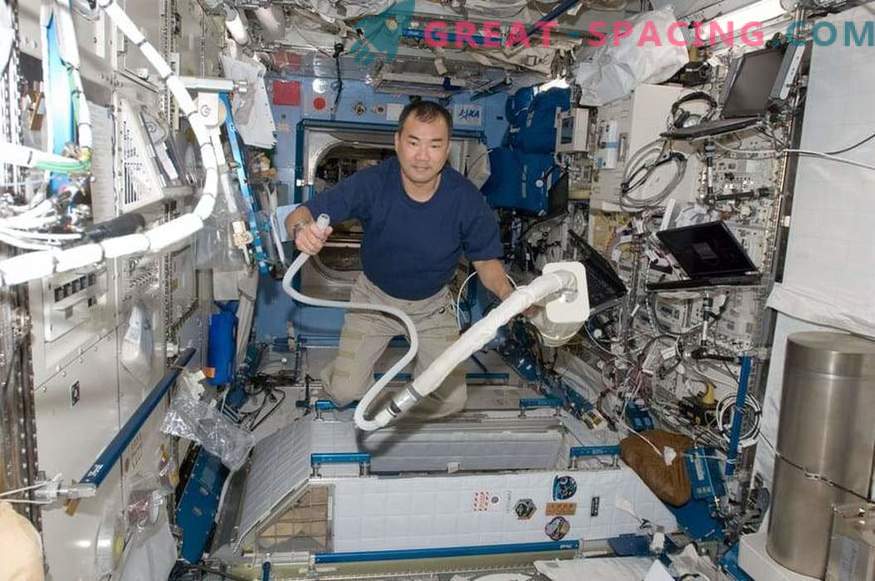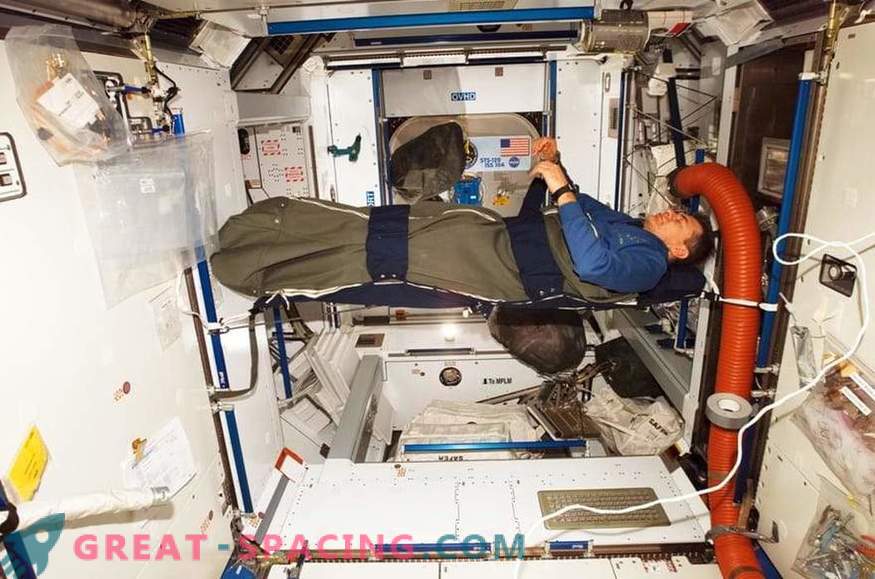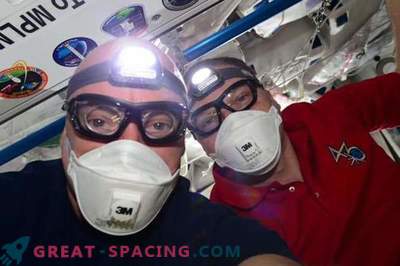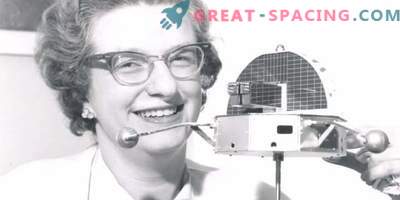
According to photographs from the International Space Station, it seems as though astronauts are all the time enjoying weightlessness, taking pictures against the backdrop of the Earth and savoring flying food. However, crew members are in harsh conditions. To feel relatively comfortable, you have to adhere to the schedule and certain rules.
Daily routine

Frank De Winn on the treadmill
The ISS is constantly moving around our planet, performing one revolution in about 92 minutes. Therefore, crew members can enjoy 16 sunrises and sunsets. To imitate day and night time, every 16 cycles, astronauts specifically close the gateways.
The orbital station staff use the Greenwich Mean Time (GMT), but at the time of the shuttle's arrival, the MET system was used (no binding to a specific time zone). Astronauts gradually shifted their sleep time in order to meet the shuttle in time, after which they returned to their usual system.
Usually, on weekdays, they spend 10 hours on work, and on Saturday, 5. Sample schedule includes:
- rise at 7 am (if necessary, carry out measurements as part of experiments on the body's response to the space environment).
- morning hygiene and breakfast at 7:05.
- preparation for work - 8:45.
- from 9:00 to 10:20 - work.
- at 10:25 - exercise is not a treadmill.
- another 2 hours to work, and at 12:15, free time (its duration depends on the amount of work).
- until 13:35 work and then lunch.
- After 25 minutes of free time, 1 hour and 20 minutes of exercise are required.
- from 16:30 to 19:35 - work.
- from 20:25 to 21:00 - two conferences (discussion of the work done and planning the next day).
- from 21:00, astronauts are getting ready for bed.
- 22:30 - sleep.
Only one of the days is described here, however, depending on tasks, space walks, meeting new crew members or repair work, the duration of rest and work can vary.
Free time

Soichi Noguchi during cleaning at Kibo laboratory
Outside of work, astronauts communicate, watch TV, play or read. In addition, there is a time to get in touch with family, send an email, watch the Earth, and take amazing pictures. Sometimes crew members are given bonuses. For example, in one of the missions, people on board saw the film “Martian” even before the premiere show on Earth.
The most difficult to adapt to the conditions of weightlessness. For example, many people have a cosmic disease and during the period of adaptation a headache and severe nausea. Similar occurs when returning to Earth.
Astronauts also have to spend at least 2 hours daily on intensive workouts, including a treadmill and weight lifting. All this is done in order to resist microgravity, which reduces muscle mass and bone density.
Sleep on the ISS

There are no usual beds here, because the crew members cannot take the usual lying position in weightlessness. They sleep in sacks attached to the walls vertically. Their location is carefully chosen to be placed near the air flow provided by the operation of the fans.
The astronauts say that at first it is difficult to fall asleep until you get used to the new conditions. It is better to fold into the shape of an embryonic cocoon. Many sleep in shorts, but if it's cold, then grab your pajamas. For the first time it is advised to take earplugs, because the equipment on the ISS is noisy all night. However, you quickly get used to the noise. Dreams in space dream in the same way as on Earth.
Space menu

During the holidays, astronauts can enjoy parcels from home. Pizza, ice cream and other delicacies have already been delivered to space. But the usual menu is different. Food is one of the most important guarantees of the health of crew members. Therefore, there are 3 main criteria:
- use: food must be tasty, saturate and easily absorbed by the body.
- as little weight as possible and long shelf life.
- compatibility with weightlessness (no crumbs and excess garbage).
Basically, the food itself is divided into three types:
- wet food - you need to heat.
- dehydrated foods - add boiling water.
- ready meals - open the sealed packaging and you can eat.
Of course, with such nutrition, there is not enough fresh vegetables and fruits. Women need to gain at least 2800 calories per day, and 3200 for men. When delivering fruit, those that can be stored at room temperature are chosen because they are not allowed to spend energy from the refrigerator.
Fresh vegetables are harder, but the crew have already managed to grow three varieties of lettuce leaves. They try to develop this technology as actively as possible, because when flying to Mars and mastering other worlds, you need to be able to provide yourself with products yourself, and not rely on earthly deliveries.
Postscript
Residents of the orbital station are accustomed to similar conditions and ways to carry them for six months, and some longer. However, there are still problems that prevent us from going on space travel. Therefore, scientists are constantly analyzing the routine of the inhabitants of the ISS in order to create the most favorable physical and psychological conditions that will allow them to safely get to Mars and get comfortable in a new place.











































